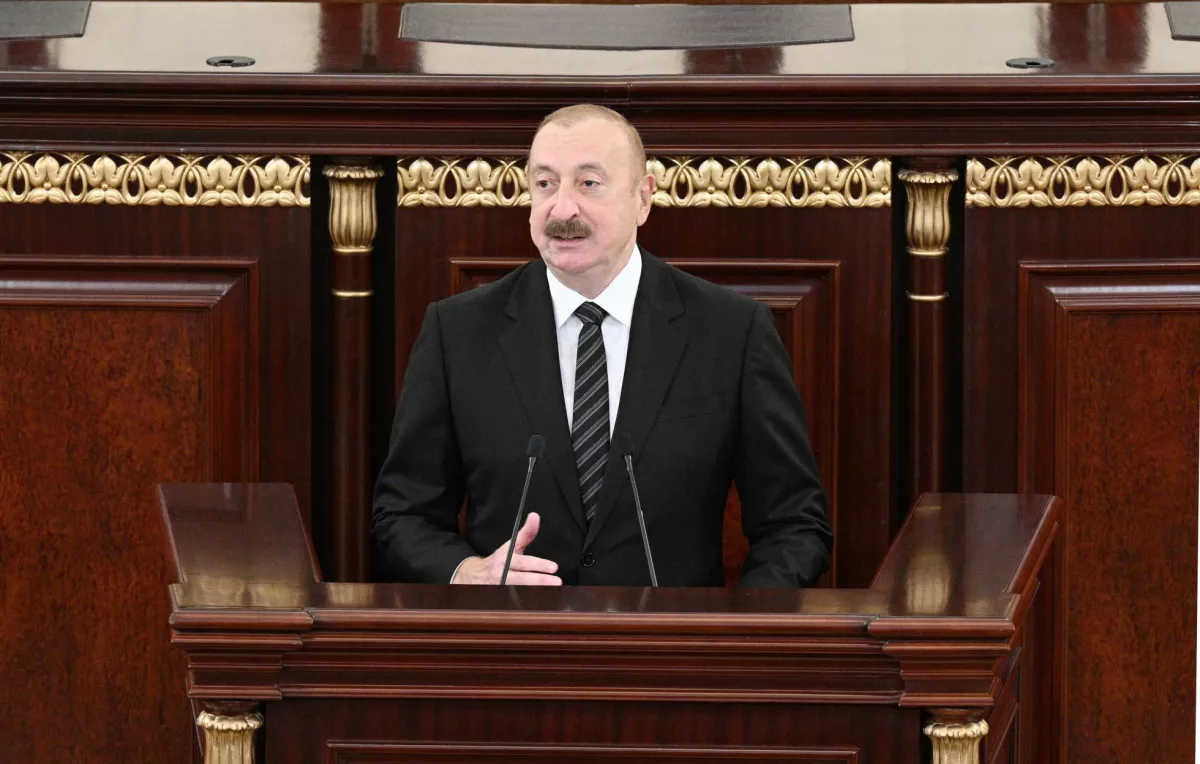From toponyms to trust Historical memory and the architecture of a new world
President Ilham Aliyev’s speech at the gathering dedicated to the 80th anniversary of the National Academy of Sciences was not merely a scholarly or humanitarian message. It represents part of a broader conceptual rethinking of regional history, taking place at the turn of an era that has already begun following the restoration of Azerbaijan’s territorial integrity.

The words of the head of the Azerbaijani state—that on the maps of Tsarist Russia there is no lake called Sevan, but rather Lake Goycha, and that “We must return to our historical lands — not with tanks, but in cars”—reflect the idea of a formula for peaceful coexistence based on the restoration of historical justice. And in this context, there is much to recall.
In particular, for decades, the Armenian side has actively worked on international platforms to shape its own historical narrative, in which any Azerbaijani roots in Karabakh and Zangezur were denied or minimised. The Armenian diaspora actively supported this effort, creating a mythologised image of “historically Armenian lands,” even going so far as to rename ancient toponyms.
President Ilham Aliyev’s statement is entirely justified: “It is enough to look at early-20th-century maps published by Tsarist Russia to see that the overwhelming majority of toponyms in what is now Armenia are of Azerbaijani origin.” Goycha is just one example. Tsarist Russia resettled Armenians onto the Karabakh lands from Iran and Eastern Anatolia in order to alter the ethnic and religious composition of the population. This is an indisputable historical fact. The head of Azerbaijan is merely reminding the public of it, establishing a clear thesis: the culture of geographic names is part of historical memory and evidence of the original presence of Azerbaijanis.
The current statement by the Azerbaijan leader is not new in essence. It continues a position he has expressed before: the return of Azerbaijanis to their lands in Zangezur. Ilham Aliyev has repeatedly stated that Azerbaijanis should have the opportunity to return to the western regions of historical East Zangezur, from which they were expelled at various points during the 20th century.
Thus, this is not about redrawing borders, but about restoring people’s rights to live freely and access their cultural roots. In this context, the head of the state rightly noted: “Azerbaijanis have never been afflicted with the disease of separatism. Our people have contributed to the statehood of the countries they live in. And today, Azerbaijanis do not create and will never create problems for any state or its people.”
This is a direct antithesis to the propaganda that promotes the myth of “genetic incompatibility between Armenians and Azerbaijanis.” This myth served as an ideological “justification” for Armenia’s occupation of Azerbaijani lands and the forced expulsion of Azerbaijanis, not only from Armenia itself but also from the temporarily occupied territories of Azerbaijan.
However, those times are now in the past. Notably, even officials in Yerevan are increasingly criticising outdated historical dogmas. For instance, Prime Minister Nikol Pashinyan has repeatedly stated that Armenians need to abandon political myths, including the myth of “Artsakh,” which served as an ideological foundation for years of conflict and tragedy.

Pashinyan has openly spoken about the need to prepare society for a future without hostility, where Armenians can travel to Azerbaijan and Azerbaijanis to Armenia. Efforts in this direction are already underway. Notably, a recent visit by a group of Azerbaijani civil society representatives to Yerevan was met not with radical protests, but with exactly what the region had long lacked – an interest in dialogue.
This event can be seen as an experiment in building trust and a preparation for an era of free exchanges. At the same time, interstate diplomacy is progressing – discussions are underway on a peace treaty, transport logistics, and new communication links. In other words, the architecture of normalisation is taking shape. This has become possible thanks to the resolution of the main obstacle – Armenia’s occupation of Azerbaijan’s lands. It is now time to move on to the next stage of relations between the two countries and their peoples.
In this context, the reminder of the lake’s true name, Goycha, is not merely a matter of scholarly accuracy. It represents a subtle assertion of Azerbaijanis’ right to maintain a connection with these lands—a peaceful, human, and cultural right. As the President of Azerbaijan has clearly stated, there will be no use of force; the return will be peaceful, accompanied by culture, knowledge, and economic development. Such a course of action contributes to good-neighbourliness rather than undermining it.
This approach stands in contrast to revanchist forces that continue to stir fear within Armenian society, claiming that Azerbaijanis supposedly seek to seize Armenia. The Azerbaijani president makes it clear: only those who have built their identity on hatred can threaten this process. One can hope that the current trend of peace will strengthen. Then, for the first time in many years, the South Caucasus could become a region of real connections, trade, and cultural exchange. Map lines would cease to be lines of division, and Lake Goycha would become a place to which Azerbaijanis can return without losing their sense of home.








